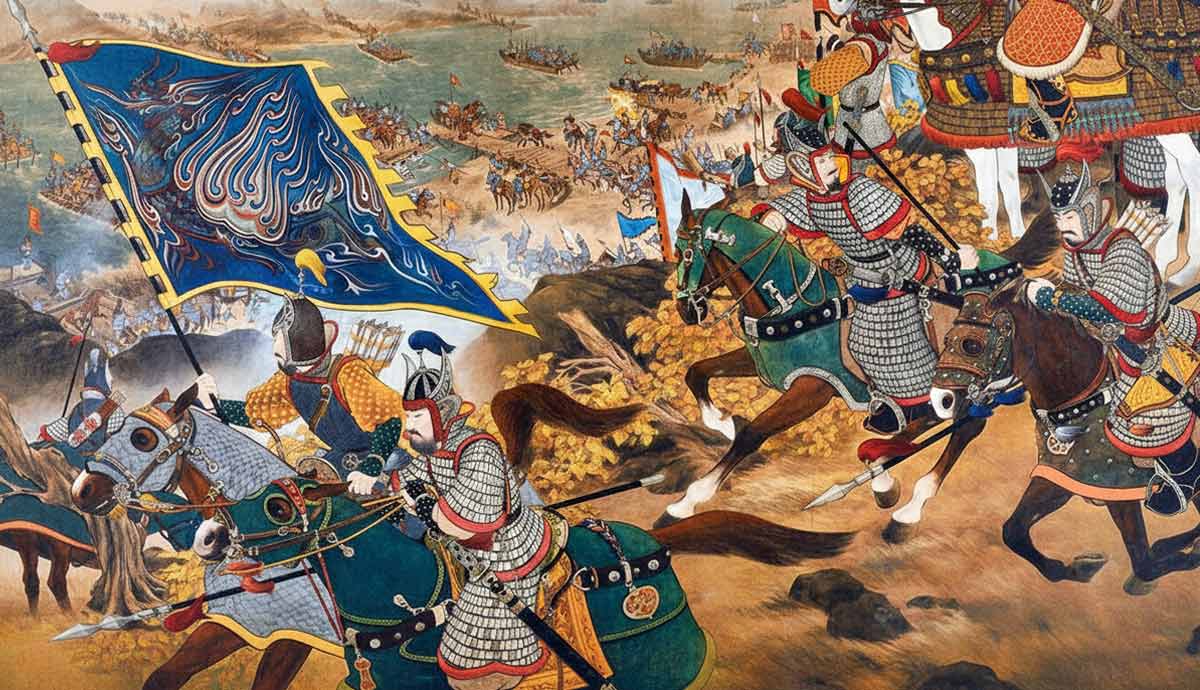
Alexander the Great, one of the most famous historical figures, was initially buried in Memphis, one of the capitals of ancient Egypt, by his loyal general and companion, Ptolemy I Soter. Later, his body was transferred to Alexandria, where it was reburied in a grand mausoleum. Alexander’s final resting place became a revered pilgrimage site, attracting Roman emperors. However, like most of the ancient metropolis, Alexander’s tomb’s location is now lost, submerged beneath the sea, buried under modern-day Alexandria, or hidden in the countryside. Despite extensive searches, the exact location of his tomb remains an enduring mystery, captivating archaeologists and historians alike.
Alexander the Great Was Buried in Egypt

By the age of 32, Alexander the Great had conquered a large portion of the known world, toppling down Achaemenid Persia and creating an empire that stretched from Greece and Egypt all the way to India. Alexander would probably expand his Empire further if not for his sudden death in Babylon in 323 BC. Following his demise, Alexander’s generals and successors – diadochi – carved the vast Empire, fighting for control over Alexander the Great’s legacy. In a daring move, Ptolemy, one of Alexander’s generals and companions, intercepted the funeral procession carrying the conqueror’s body back to Greece.
Ptolemy brought the body to Egypt, to the ancient capital of Memphis. The audacious act served a dual purpose: legitimizing the newly founded Ptolemaic dynasty and associating it with the legendary conqueror-turned-pharaoh.
His Final Resting Place Was Alexandria

Shortly before his death, Alexander the Great expressed his wish to be buried in the Siwa Oasis, in the temple of Zeus Ammon. His wish was not honored, but Ptolemy managed to bury Alexander’s body in ancient Memphis. Ptolemy’s successors, however, had more ambitious plans. In the late 4th or early 3rd century, they transferred Alexander the Great’s body to Alexandria, where it was reburied in a new, magnificent tomb.
The exact location of Alexander’s mausoleum within Alexandria remains a mystery. Ancient sources refer to a place known as the Soma (from the Greek σῶμα, which means “body”) or Sema (from the Greek σῆμα meaning “grave sign or marker”), which housed Alexander’s sarcophagus. The tomb soon became a site of veneration and pilgrimage, increasing the importance of Alexandria as the capital of the Hellenistic world.
Alexander’s Tomb Became a Pilgrimage Site

By 274 BC, Alexander the Great was buried in Alexandria, his tomb becoming the focal point for the Ptolemaic cult dedicated to him. Many famous figures visited the final resting place of the legendary conqueror. Julius Caesar paid his respects when he arrived in Alexandria following Pompey the Great’s death. The first Roman emperor – Augustus – also visited Alexander’s mausoleum following his victory of Actium, which made him the sole master of the Roman world, and made Egypt a Roman province, and emperor’s personal possession.
These visits were not merely acts of respect but powerful political statements as the emperors sought to draw parallels with their idol, Alexander the Great. Emperor Caligula is said to have taken the conqueror’s breastplate, while Caracalla reportedly placed his own tunic, ring, belt, and some other precious items on the coffin symbolizing a transfer of martial virtue from the ancient conqueror to himself.
Alexander the Great’s Tomb is Now Lost

By the late fourth century, Alexander the Great’s tomb lost its importance. When emperor Theodosius I banned pagan practices and ordered closure of all temples, Alexander’s tomb was opened and looted. If the mausoleum lay within the royal quarter of Alexandria, it might have suffered damage during the devastating tsunami that struck the city in 365 AD. However, even after the Arabs took control of Alexandria following the Battle of Yarmuk, the historians and visitors to the city reported having seen the conqueror’s tomb. The last mention dates back to the 16th century, when the once-proud metropolis had been reduced to a coastal village.
Speculations abound. Could Venetian merchants have unwittingly stolen Alexander’s remains, mistaking them for those of St. Mark? Some propose that the conqueror’s tomb lies submerged beneath the waves or hidden beneath the modern streets of Alexandria.

Despite numerous archaeological excavations, the precise spot of Alexander’s final resting place in Alexandria still eludes us. And it would probably remain so, continuing to captivate the imagination of scholars and enthusiasts alike – a symbol of the elusive nature of history, and our ongoing pursuit to uncover the secrets of the past.










